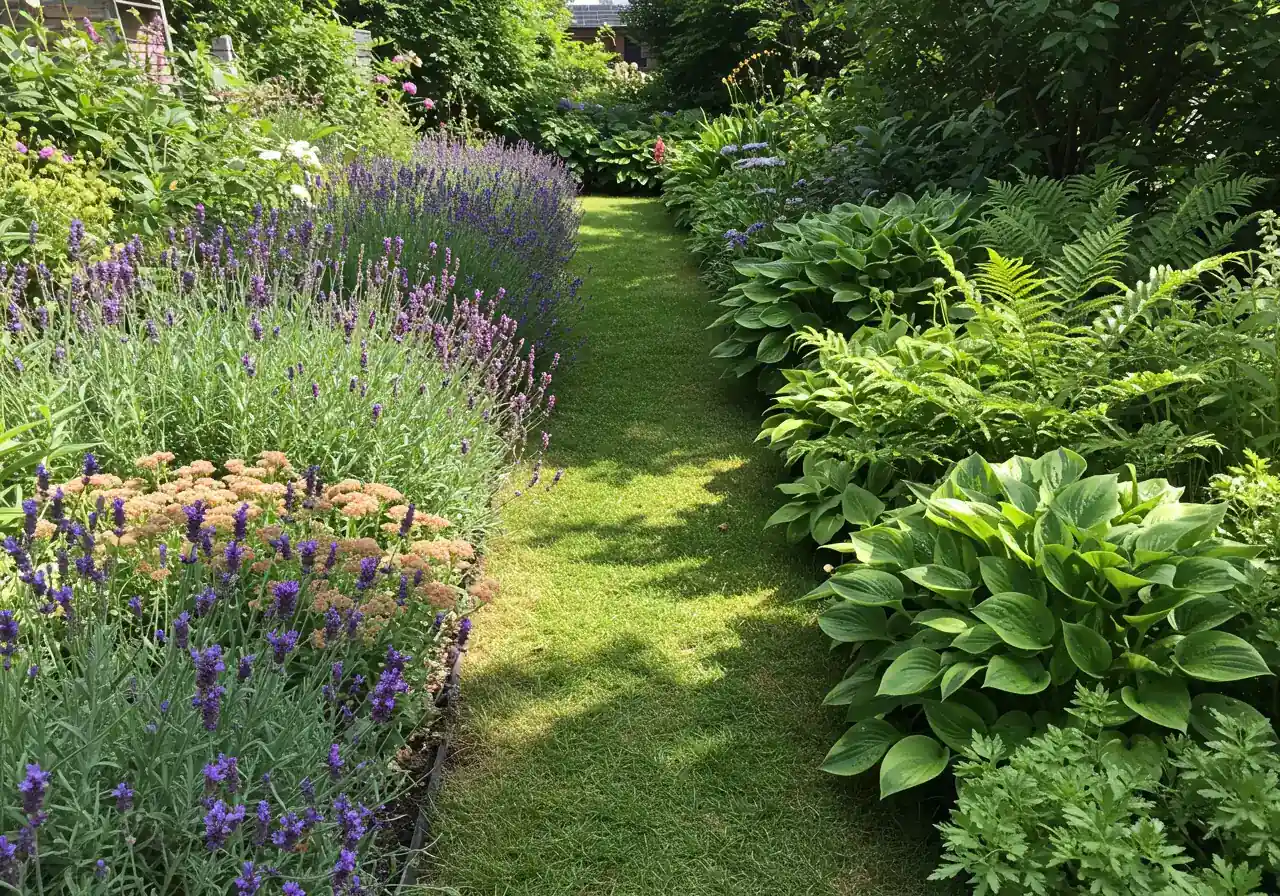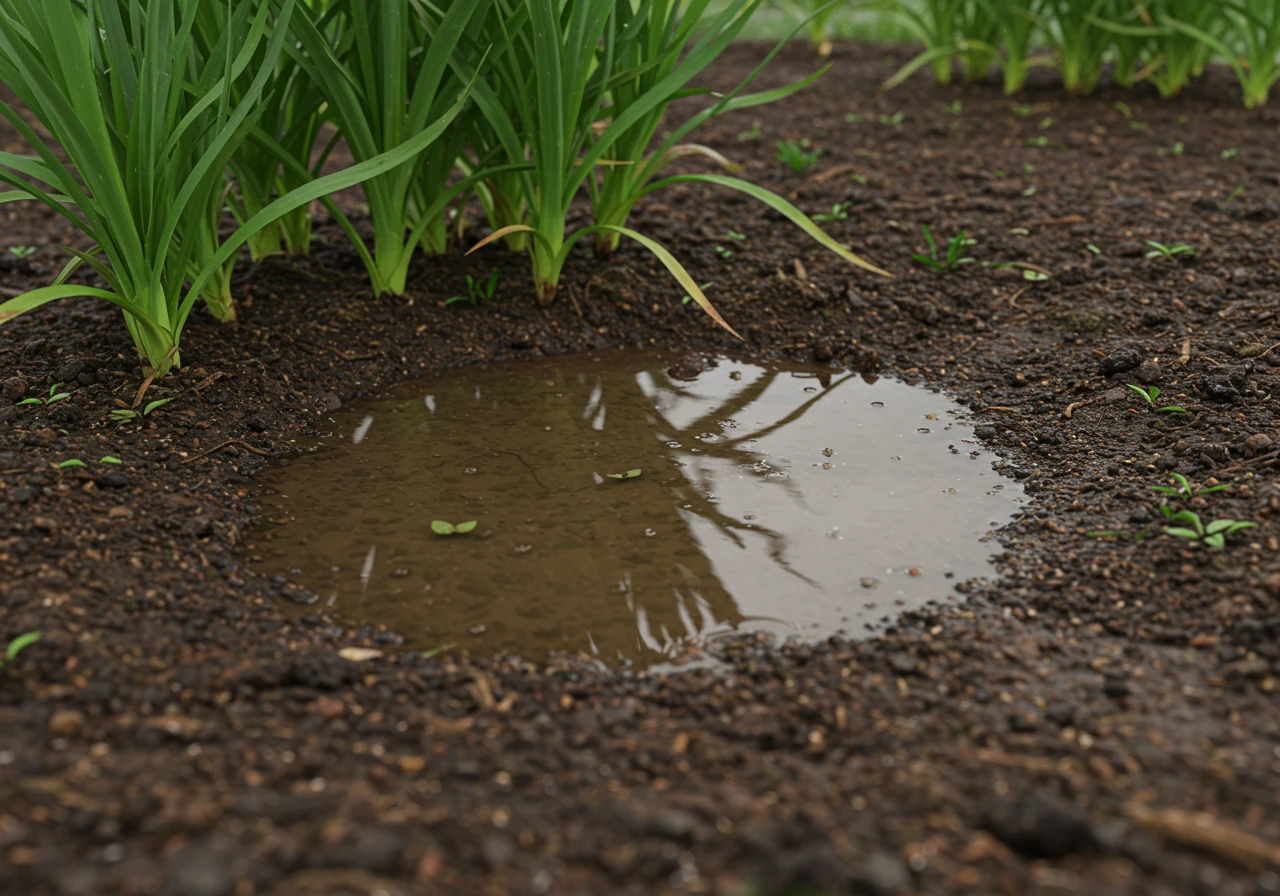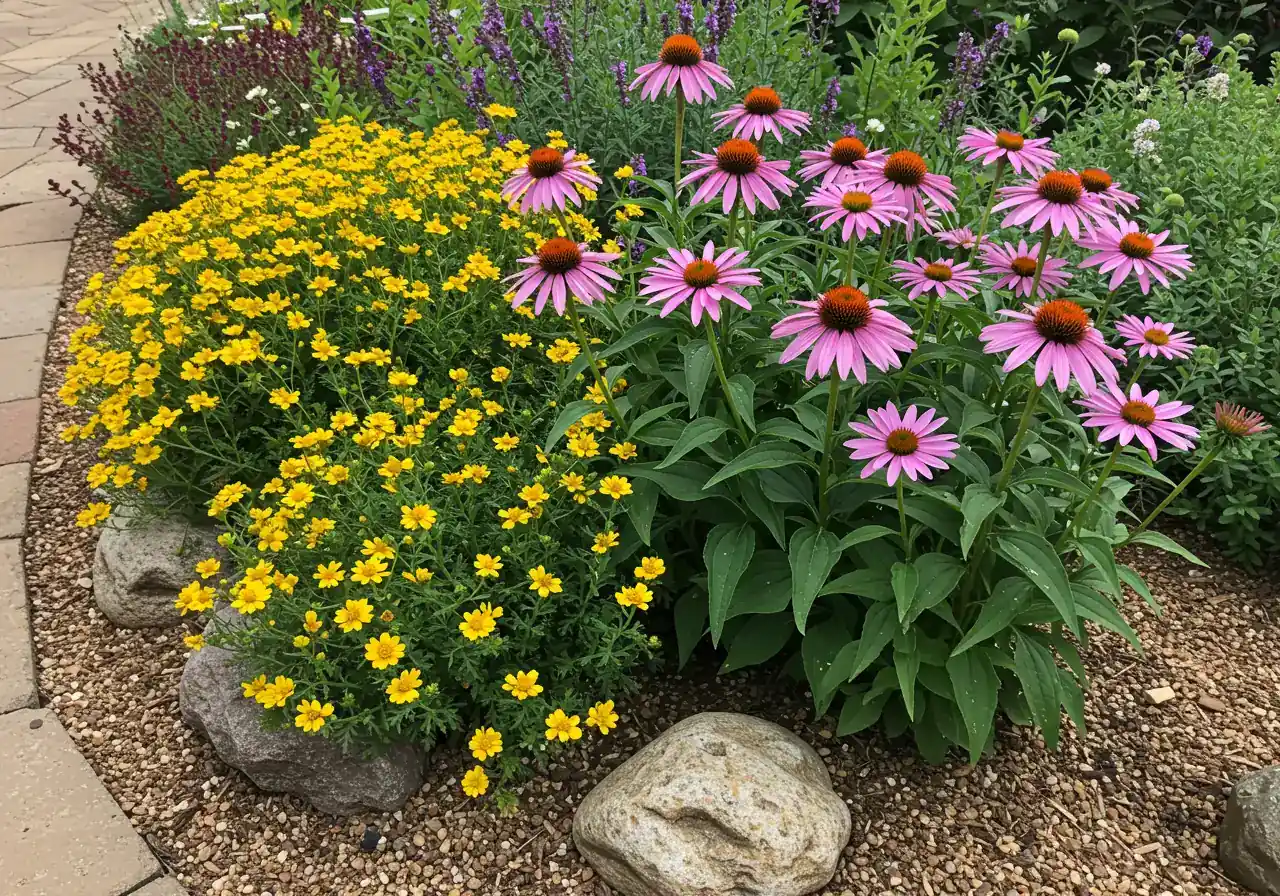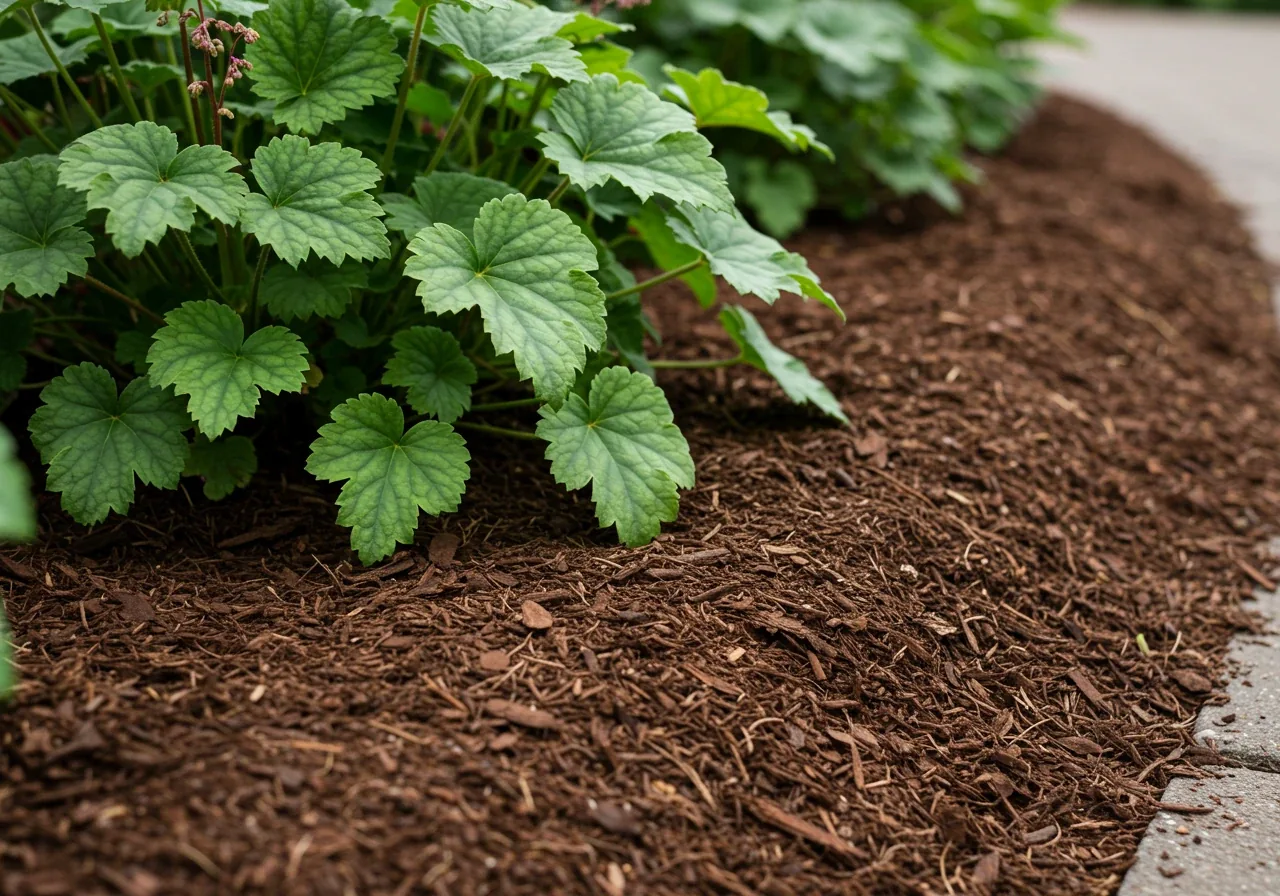Embrun Tricky Spots: Microclimate Planting Guide Summer
Ready to tackle your tricky garden spots but want professional results? Request your free quote today!
Quick Guide to Embrun Microclimates:
- What are Microclimates? Small areas in your yard with unique sun, wind, or moisture conditions (e.g., near walls, under trees).
- Why Identify Them? To choose plants that will thrive, not just survive, saving time and money.
- Key Strategies: Observe sun/shade, wind, and water patterns. Match plants to conditions (e.g., drought-tolerant for hot spots, shade-lovers for under trees). Use mulch effectively. Water wisely based on the specific zone.
- Need Help? Clean Yards offers expert landscaping services to transform problem areas.
Intro: Conquering Embrun's Garden Gremlins This Summer
Ah, summer gardening in Embrun! Sunshine, blooming flowers... and those *other* spots in the yard where plants seem to mysteriously give up the ghost, right? It’s a common frustration across the Ottawa region, from Barrhaven to right here in Embrun – some plants thrive, while others just fizzle, looking decidedly unhappy no matter what you try. You’re not alone if you feel like tiny garden gremlins are sabotaging your landscaping efforts!
Often, these troublesome patches aren't just bad luck; they're microclimates! What's a microclimate? It’s simply a small area within your larger garden – perhaps near a fence, under a large tree, or against a south-facing wall – where conditions like sunlight intensity, wind exposure, or soil moisture differ significantly from the rest of your yard. Think of them as little weather pockets.
This summer, let's ditch the guesswork and frustration. This guide is your friendly helper, designed to turn you into a garden detective. We'll show you how to identify these unique zones lurking in your own Embrun landscape and, more importantly, help you choose *perfect* plants and strategies so those tricky spots won’t just survive, but actually thrive. Let’s conquer those garden gremlins together and make your whole yard shine!
Decoding Your Yard: Understanding Embrun's Climate & Microclimate Basics

Alright, let's get down to brass tacks, or maybe we should say, *grass roots*! Gardening successfully in Embrun, much like in nearby Russell or anywhere in the greater Ottawa region, starts with understanding the stage where your plants perform: your yard's unique climate conditions. Overall, Embrun enjoys warm, sometimes quite humid summers perfect for growing many things, but we also know those conditions aren't uniform across *every square inch* of our properties. That’s where microclimates come in, those little weather quirks we mentioned earlier.
Think of it this way: your yard isn't just one big climate zone; it's more like a patchwork quilt of slightly different environments. These microclimates are created by things already in your landscape. Common culprits include:
- Sun Traps: Spots next to south or west-facing walls, especially brick, soak up heat like a sponge, making the soil much hotter and drier than just a few feet away.
- Shade Zones: Underneath large trees (hello, maples!) or on the north side of your house, the lack of direct sun changes everything. Plus, tree roots compete for water!
- Wind Tunnels: Areas between houses or alongside long fences can channel wind, drying out plants faster than you can say "thirsty."
- Low Spots & Clay Corners: Does water tend to pool somewhere after rain? That's a microclimate! Embrun is known for its clay soil, which can create drainage nightmares in some spots, leading to soggy roots. Dealing with heavy soil requires specific strategies, whether you're planting flowers or trying to improve drainage. For detailed advice, check out these Tips for Your Embrun Veggie Garden in Clay Soil or learn about Embrun Fall Plant Care & Clay Soil Solutions. Improving soil preparation is key.
- Pavement Proximity: Areas beside driveways or patios get extra reflected heat and can suffer from soil compaction.
These variations directly impact your plants. A sun-loving perennial might crisp up in a sun trap, while shade plants yellow in too much light. Poor drainage can lead to root rot, and compacted soil prevents roots from getting air and water – understanding Why Lawn Aeration is Key for Soil Health in Embrun can make a huge difference, especially in clay. Even your lawn might show microclimates, with struggling patches that could benefit from Overseeding Your Embrun Lawn for Thicker Grass or professional lawn care.
Recognizing these zones is the first step to choosing the *right* plant for the *right* spot. Sometimes, tackling these tricky areas or getting a property ready for planting requires a bit more muscle, which is where our full range of landscaping services or a dedicated Embrun yard cleanup service can be a lifesaver. By decoding your yard's microclimates, you can work *with* them, not against them, for a happier, healthier landscape. We offer services across the region, including Ottawa yard cleanup and city-wide yard cleanups.
Playing Detective: How to Identify Your Garden's Unique Microclimates

Alright, garden sleuths, grab your metaphorical magnifying glass! It’s time to uncover the hidden secrets of your own backyard. Identifying your garden's microclimates isn't complicated; it mostly just takes a little observation. Think of yourself as a detective gathering clues across your Manotick or Barrhaven property – or anywhere in the Ottawa area, really! Here’s how to crack the case:
1. Follow the Sun (and Shade):
This is your biggest clue. Spend some time outside on a sunny day. Where does the sun hit first thing in the morning? Where does it linger longest in the afternoon? Notice the shadows cast by your house, trees, or fences.
- Tip: Do this at different times of the day – say, 9 AM, noon, and 4 PM. You might be surprised how much shade patterns shift! Mark these sunny and shady zones on a rough sketch of your yard. A spot getting less than 6 hours of direct sun is considered part shade or full shade. You can find more gardening tips on the City of Ottawa's gardening page.
2. Watch the Wind:
Wind can dry out soil and plants faster than you can blink. Where does the snow drift most in winter? Where do leaves pile up in fall? Watch how plants move on a breezy day.
- Tip: Areas between houses or along solid fences often become wind tunnels. Exposed corners are also prime suspects. Note these potentially blustery spots on your map.
3. Track the Water:
After a good rain, where does water puddle and hang around? Conversely, which spots seem bone-dry almost immediately? Pay attention in the spring too – where does the snow melt first (usually warmer spots) or last (cooler, shadier, or poorly drained spots)?
- Tip: Low spots or areas with heavy clay soil often stay wet. Slopes or areas near pavement tend to dry out quickly. If you have a particularly messy or overgrown area making observation difficult, sometimes starting with a thorough Ottawa property cleanup service can clear the way for better detective work. A focused Ottawa garden clean up service can also help tidy specific beds for assessment. Similar services are available for specific areas like city properties.
4. Investigate Structures & Surfaces:
Brick walls facing south or west absorb and radiate heat, creating mini heat islands. Large trees create dense shade and compete for water. Paved driveways and patios reflect heat onto nearby planting areas.
- Tip: Feel the soil temperature near these features compared to the middle of the lawn. Note these "hot spots" or "root zones" on your map.
Put It All on Paper:
Now, take that rough sketch and mark down your findings. Use different symbols or colors for "full sun," "part shade," "windy," "wet spot," "dry spot," etc. This visual map is your secret weapon! It shows you exactly where specific conditions exist. Understanding these zones is the *first step* to planning successful landscape transformations. It helps you select the right plants during a new garden install or even decide where new grass will thrive best if you're considering sod installation.
See? No advanced degree needed – just a little time spent observing your own patch of Ottawa earth! Happy detecting!
Right Plant, Right Place: Summer Planting Strategies for Embrun's Tricky Spots
Okay, detectives, you've identified those sneaky microclimates lurking in your Embrun yard! Now comes the fun part: choosing the right plants to *thrive* in those challenging conditions. Forget forcing plants where they don't want to be – that's like trying to teach a goldfish to climb a tree. Let's work *with* your yard's quirks, not against them. Here’s how to pick winners for those common tricky spots found from here to Metcalfe and beyond.

1. The Sahara Strip: Hot, Dry, Full Sun Spots
Conditions: Think south or west-facing walls, areas next to driveways, or just those spots the sun relentlessly bakes all afternoon. The soil heats up quickly and dries out faster than ice cream on a July sidewalk.
Strategy: Embrace the heat! Look for drought-tolerant plants, often native to prairies or Mediterranean climates. This is prime territory for *xeriscaping* – landscaping that minimizes the need for extra watering. Consider grouping plants with similar water needs together. And don't underestimate the power of mulch! Proper mulching and edging can significantly reduce water evaporation, keeping roots cooler and happier.
Plant Superstars (Zone 5):
- Perennials: Stonecrop (Sedum 'Autumn Joy'), Yarrow (Achillea), Coneflower (Echinacea - native options available!), Blanket Flower (Gaillardia), Lavender (Lavandula).
- Annuals: Portulaca (Moss Rose), Gazania, Vinca, Zinnia (especially shorter varieties).
2. The Shade Shindig: From Dry Shade to Moist Shade
Conditions: Underneath large trees (hello, competitive tree roots!), on the north side of your house, or shadowed by fences. *Dry shade* is common under maples where roots suck up moisture. *Moist shade* might be found in naturally lower, shaded spots with better soil.
Strategy: Match the plant to the *type* of shade. For dry shade, choose tough cookies that can handle root competition and less water once established. For moist shade, you have more options, including some lovely foliage plants. Before planting under trees, clearing out old leaves and debris is crucial; sometimes using a thorough city garden clean up service makes this daunting task much easier. Amend the soil with compost to give new plants a fighting chance.
Plant Superstars (Zone 5):
- Dry Shade Perennials: Barrenwort (Epimedium), Bigroot Geranium (Geranium macrorrhizum), Hosta (some varieties are tougher than others), Lungwort (Pulmonaria).
- Moist Shade Perennials: Astilbe, Bleeding Heart (Dicentra spectabilis), Hostas (most varieties thrive here), Ferns (many native options like Ostrich Fern), Coral Bells (Heuchera).
- Annuals (usually prefer moist shade): Impatiens, Begonia (Tuberous and Wax), Coleus, Browallia.
3. The Soggy Bottom Bog: Wet Spots & Poor Drainage
Conditions: Low-lying areas where water collects after rain, places with heavy clay soil that just doesn't drain well. Standing water can drown many plant roots.
Strategy: Choose plants that don't mind getting their feet wet, or even prefer it! These are often called "bog plants" or "marginal plants." Alternatively, consider creating a *rain garden* – a specially designed shallow depression planted with water-loving species that helps manage stormwater runoff ecologically, a practice supported by organizations like the Rideau Valley Conservation Authority. Improving drainage around the area is also key, perhaps by amending the soil or ensuring surrounding lawn areas slope away properly – sometimes this involves grading before considering professional sod installation for adjacent spaces. Preparing these often-neglected soggy areas might require significant effort, sometimes starting with a comprehensive property clean up to really see what you're dealing with.
Plant Superstars (Zone 5):
- Perennials: Siberian Iris (Iris sibirica), Joe Pye Weed (Eutrochium - native!), Swamp Milkweed (Asclepias incarnata - native!), Cardinal Flower (Lobelia cardinalis - native!), Rodgersia, Ligularia ('The Rocket').
- Annuals: Canna Lily (often treated as an annual here), certain Coleus varieties if kept consistently moist.
4. The Wind Tunnel Tussle: Windy & Exposed Areas
Conditions: Between houses, along long fence lines, exposed corners of the property, especially common in newer developments around Ottawa and Russell. Constant wind dries out plants and can physically damage fragile stems and leaves.
Strategy: Go low or go flexible! Choose plants with sturdy, flexible stems that bend rather than break, or select low-growing groundcovers that hug the earth. Creating windbreaks with tougher shrubs or structures can help, but sometimes you just need plants that can handle the breeze. Keeping the area tidy is also helpful; a regular city yard cleanup service prevents excess leaves and debris from becoming windblown missiles. This applies everywhere, from suburban yards to larger rural lots needing a dedicated Marionville property cleanup service or even a Metcalf property cleanup service.
Plant Superstars (Zone 5):
- Perennials: Ornamental Grasses (Switchgrass 'Panicum', Feather Reed Grass 'Calamagrostis' – many native options!), Creeping Juniper (Juniperus horizontalis), Potentilla, Catmint (Nepeta), Sea Thrift (Armeria maritima).
- Annuals: Calendula, Dianthus (Sweet William), Alyssum, Dusty Miller.
Quick Comparison Cheat Sheet:
| Tricky Spot | Conditions | Strategy Highlights | Plant Examples (Perennials/Annuals) |
|---|---|---|---|
| Hot & Dry Sun | Intense sun, fast dry | Xeriscaping, mulch, drought-tolerant | Sedum, Yarrow, Coneflower / Portulaca, Gazania, Vinca |
| Shade | Low light, dry or moist | Match plant to moisture, amend soil | Hosta, Ferns, Astilbe / Impatiens, Begonia, Coleus |
| Wet & Soggy | Poor drainage, pooling | Water-loving plants, rain garden | Siberian Iris, Joe Pye Weed, Swamp Milkweed / Canna Lily |
| Windy & Exposed | Constant breeze, drying | Low-growing, flexible stems, sturdy | Ornamental Grasses, Juniper, Potentilla / Calendula, Dianthus |
By choosing plants suited to your specific microclimates, you save yourself headaches, conserve water, and create a more resilient, beautiful garden. Happy planting! Check our Privacy Policy for site usage details.
Summer Survival Guide: Caring for Your Microclimate Plantings

Okay, you’ve identified your microclimates and picked the perfect plants. High five! But summer in Ottawa – whether you're in Manotick, Metcalfe, or anywhere else – brings the heat, and those special zones need tailored TLC to truly thrive. Think of it as personalized spa treatment for your plants! Here’s your survival guide:
Water Wisely: The Thirst Quencher
Not all areas need the same amount of water, especially during dry spells.
- Hot & Dry Zones: These guys are thirsty! Water deeply but less frequently. Poke your finger into the soil; water only when the top inch or two feels dry. Deep watering encourages roots to grow down, making plants more drought-resilient. Early morning watering is best to reduce evaporation.
- Shady & Moist Zones: Don't drown them! These spots hold moisture longer. Always check the soil before watering. Overwatering, especially in shade, is an invitation to fungal diseases. If it feels damp an inch down, hold off.
- Clay Soil Areas: Water slowly to allow absorption. Fast watering can lead to runoff on compacted clay.
Mulch Magic: The Soil Blanket
We mentioned mulch before, but in summer, it's a superhero! A 2-3 inch layer of organic mulch (like shredded bark, wood chips, or compost) is crucial:
- Conserves Moisture: It acts like a lid on your soil, drastically slowing evaporation. Less watering for you!
- Keeps Roots Cool: Mulch insulates the soil from the baking sun, preventing root stress in those hot microclimates.
- Suppresses Weeds: Fewer pesky weeds competing with your plants for water and nutrients. Win-win! Our Mulching and Edging service can help establish this crucial layer.
Soil TLC: Keep the Foundation Strong
Even with the right plants, good soil structure helps.
- Top Up Compost: Adding a bit more compost around plants mid-summer can replenish nutrients and improve water retention (for dry spots) or drainage (in heavy clay). Consistent garden maintenance practices like this pay off.
- Avoid Compaction: Try not to repeatedly walk on garden beds, especially when wet, as this squishes the soil particles together.
General Upkeep: The Finishing Touches
- Weed Watch: Stay vigilant! Weeds steal precious water and nutrients, especially impacting plants already stressed by a microclimate. Regular weeding is key. If weeds have taken over larger areas, a focused cleanup might be needed, whether it's a general Ottawa yard cleanup service or specific help for larger rural lots like those requiring a Marionville yard cleanup service or Metcalf yard cleanup.
- Deadhead Diligently: Removing spent flowers (deadheading) encourages many perennials and annuals to produce more blooms instead of putting energy into seeds.
- Pest Patrol: Stressed plants can be more vulnerable. Keep an eye out for common pests or signs of disease and act quickly. Sometimes, overwhelming tasks call for backup; consider a city garden maintenance service for regular help. For specific neighbourhood needs, like managing larger properties, a Metcalf property cleanup service can tackle those bigger summer upkeep jobs. Always ensure you understand the scope of any booked work by reviewing our terms and conditions.
Quick Summer Microclimate Care Checklist:
- Check soil moisture *before* watering, adapting frequency to the zone (deep/infrequent for hot/dry, check first for shade/moist).
- Maintain a 2-3 inch layer of organic mulch.
- Weed regularly – don't let them steal resources!
- Deadhead spent blooms for more flowers.
- Monitor for pests and diseases, especially on potentially stressed plants.
By tuning your summer care to your garden's unique microclimates, you'll help *all* your plants beat the heat and look their best!
Microclimate Quick Wins!
Feeling a bit overwhelmed by your garden's quirky corners in Embrun or Osgoode? Don't sweat it! Here are a few speedy tricks to make peace with those microclimates:
- Mulch is Your Friend: Slap down 2-3 inches of organic mulch (like bark chips) around plants in hot, sunny spots *and* shady zones. It keeps soil cool, holds moisture, and smothers weeds. Think of it as step one in excellent soil preparation for happy plants.
- Water Where it Counts: Forget watering the whole yard the same way! Check the soil first. Hot spots need deep drinks less often; shady spots need less water overall to avoid soggy feet. Observe and adjust!
- Tackle Toughies (or Get Help): Some spots are just plain difficult. Improving drainage or choosing super-tough plants helps. If a neglected area feels like too much, know that specialized help like a focused Marionville garden clean up service exists for big jobs. Just be sure to review the service agreement details before committing.
- Ask an Expert: Still stumped by that barren patch near Metcalfe? A little advice goes a long way. Contact us for personalized landscaping tips – we love talking plants, and you'll see our appreciation on our Thank You page after reaching out! Check out our About Us page to learn more.
Example: Water Needs by Microclimate
This simplified chart illustrates how water requirements might vary across different garden zones during a typical dry summer week.
*Values are illustrative percentages of maximum potential water needed.
Seasonal Microclimate Tasks
Spring (April-May)
Observe melt patterns & drainage. Amend soil in problem spots. Plan plantings based on microclimate map. Start cleanup in areas like Metcalfe gardens.
Late Spring (May-June)
Plant hardier perennials/shrubs. Plant annuals after frost risk. Apply initial layer of mulch.
Summer (July-August)
Monitor water needs closely per zone. Weed diligently. Deadhead flowers. Refresh mulch if needed. Consider ongoing maintenance.
Early Fall (Sept-Oct)
Ideal time for planting most perennials/shrubs in tricky spots. Divide overgrown perennials adapted to their microclimate. See fall care tips.
FAQs: Your Embrun & Ottawa Microclimate Questions Answered
My Embrun yard has heavy clay soil. How does this create microclimates and affect my plants?
Oh, that infamous Ottawa Valley clay! It holds water like a sponge, creating soggy microclimates where roots can rot after rain, but it also bakes brick-hard when dry. Improve drainage by mixing in lots of compost. Choose plants tolerant of 'wet feet' for low spots and amend planting holes generously. Dealing with stubborn clay often requires persistence and the right soil amendments. Learn more about beating clay soil.
When's the best time to plant in my garden's microclimates, like a really hot spot near my Barrhaven house?
Timing is key for tricky spots! Plant perennials or shrubs in spring or early fall around Ottawa/Barrhaven to let roots settle before summer's heat or winter's chill hits. Avoid planting fragile things in super hot spots mid-summer. For annuals, wait until after the last frost. Success hinges on careful planting and good soil prep, maybe involving specific amendments; we offer expert guidance on choosing the right landscape materials for soil improvement.
My yard in Russell acts like a wind tunnel between the houses! What can I plant there that won't get shredded?
Wind tunnels, like those often found between houses in Russell or Nepean, demand tough plants! Choose flexible stems (ornamental grasses) or sturdy, low-growers (creeping juniper, potentilla). Skip plants with giant, delicate leaves. Sometimes, managing wind-blown debris is the biggest challenge; if cleanup is daunting, check out our specific Metcalfe garden clean up service for an idea of focused help available nearby.
Do I really need to water different parts of my Nepean lawn and garden differently because of microclimates?
Absolutely! That sunny patch near the pavement dries out way faster than the shady spot under your maple. Sticking to one watering schedule for your whole Nepean yard often means over-watering some areas (hello, fungus!) and under-watering others. Check the soil moisture in each zone before grabbing the hose. Adapting watering is essential for healthy plants and is part of effective lawn care strategies for Ottawa lawns.
I'm overwhelmed trying to pick plants for the weird spots in my Greely garden. Any simple advice?
No worries! The key for your Greely garden is matching the plant to the spot. Observe: sunny or shady? Wet or dry? Windy? Then pick plants labeled for those conditions *and* our Ottawa climate (Zone 5). Native plants are often tough cookies! Still unsure? You can always get a quick estimate or share your feedback on specific areas you need help planting – we can offer suggestions!
My garden microclimates are really challenging, especially a soggy area in Osgoode. When should I call for professional help?
If microclimates like your soggy Osgoode spot feel overwhelming, or if you need major drainage work, heavy soil amendment, or large-scale planting, consider calling pros! We can assess tricky situations, suggest solutions (grading, drainage), and do the hard work. Getting expert input can save costly mistakes. To see if our methods fit your needs, learn more about our team and approach and how we tackle garden challenges like those needing a Marionville yard cleanup.
Conclusion: Turn Your Tricky Spots into Triumphs!
Whew! We've journeyed through the sunny spots, shady corners, and sometimes soggy bits that make up our unique Ottawa yards. Understanding those little microclimates – the garden gremlins we talked about – isn't about making *more* work, it's about making your landscaping *smarter*. By playing detective and figuring out where it’s hot, shady, wet, or windy, you can stop fighting your garden and start working *with* it. Choosing plants that actually *like* those specific conditions means less frustration, healthier plants, and a more beautiful yard overall. No more watching perfectly good plants throw in the trowel!
Remember, even small changes based on your microclimate observations can make a big difference. *You've got this!* Why not try implementing just one tip this week, like checking soil moisture before watering different zones? Or share this guide with a fellow gardener wrestling with their own tricky spots! You can find us on Google here: Clean Yards on Google.
Feeling like those tricky spots need a bit more muscle than you have time for? Whether you're battling clay in Embrun, tackling a windy corner in Osgoode, or dreaming up a whole new garden design in Metcalfe, we're here to help. Contact Clean Yards today for expert landscaping services and turn those problem patches into prize-winning parts of your property! We’d love to hear about your biggest microclimate challenge.

